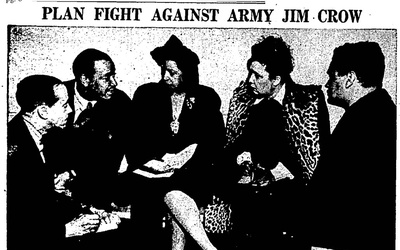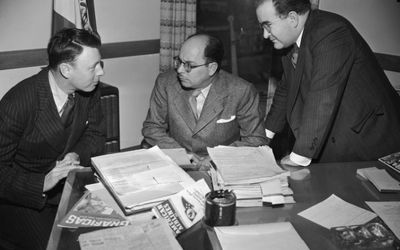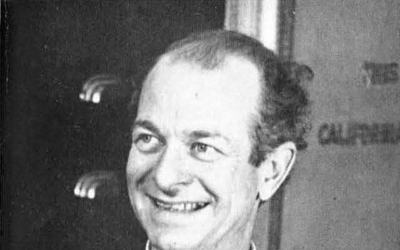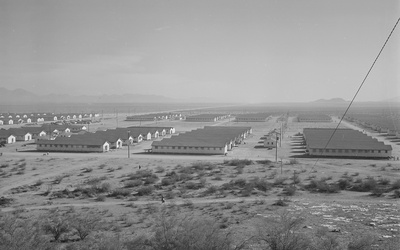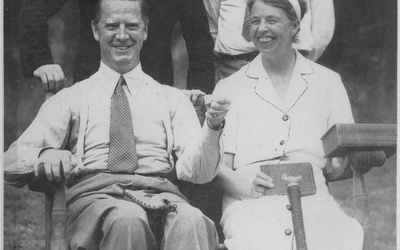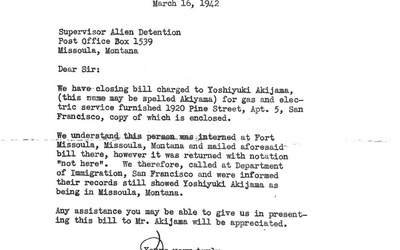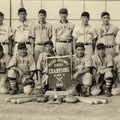
Jonathan van Harmelen
@jonathanJonathan van Harmelen is currently a Ph.D student in history at UC Santa Cruz specializing in the history of Japanese-American incarceration. He holds a BA in history and French from Pomona College and an MA from Georgetown University. He can be reached at jvanharm@ucsc.edu.
Updated February 2020
Stories from This Author
Edmonia White Grant: A Black Woman Standing Up for Japanese Americans
April 20, 2021 • Jonathan van Harmelen
While West Coast anti-Asian racism is well-known as a cause of the forced removal of Japanese Americans during World War II, the complex history of intergroup relations between Japanese Americans and Black Americans during and after World War II still remains rather unexplored. In recent years, scholars and activists have begun to better understand the relationship between Japanese Americans and Black Americans. Cheryl Greenberg has studied the reporting of forced removal in the Black American press, while Greg Robinson rediscovered …
Farms of the Future: The Work of Laurence I. Hewes, Jr. - Part 2
March 22, 2021 • Jonathan van Harmelen
Read Part 1 >> The incarceration experience left a deep impression on Hewes. He later recounted that when he read the first reports of mass removal from Bainbridge Island, with children clinging to dolls and the elderly being ushered to buses by soldiers with bayonets, he stated that the reality of what was unfolding really hit him. After leaving work as the WCCA’s agricultural advisor in Fall 1942, he returned to his post with the FSA. Hewes then oversaw the …
Farms of the Future: The Work of Laurence I. Hewes, Jr. - Part 1
March 21, 2021 • Jonathan van Harmelen
The incarceration of Japanese Americans, in addition to being a product of years of racial hatred against Asian immigrants and economic profiteering by West Coast interest groups, represents an uncomfortable legacy of New Deal governance. Following Executive Order 9066, dozens of New Deal bureaucrats took up work as staffers for the War Relocation Authority and other agencies, assuming responsibility for organizing and managing the camps with the goal of transforming the sites housing them into agricultural oases in the deserts …
Linus Pauling: Advisor and Advocate
March 8, 2021 • Jonathan van Harmelen
In a previous article for Discover Nikkei, I profiled the life work of Harvey Itano, the first Japanese American student to leave camp, who became a pioneering researcher of sickle-cell anemia. During his graduate studies at the California Institute of Technology (or Cal Tech), Itano worked with the distinguished scientist (and later two-time Nobel Prize winner) Linus Pauling. Although Pauling’s work as a scientist and peace activist is world-renowned, his experience living on the West Coast and serving as an …
How fair is “Fair Enough?” Westbrook Pegler and Japanese Americans - Part 2
Feb. 12, 2021 • Greg Robinson , Jonathan van Harmelen
Read Part 1 >> On May 4, 1943, a few days after his two columns on Japanese Americans appeared in print (and less than two weeks after Eleanor Roosevelt’s tour of the same camp) Pegler came to Gila River. Afterwards, Pegler wrote in his May 6, 1943 column that conditions were austere and trying, but asserted that many Japanese Americans – specifically Kibei - were disloyal and “savages like the Japanese soldier.” He cited a rumor spread by a nurse …
How fair is “Fair Enough?” Westbrook Pegler and Japanese Americans - Part 1
Feb. 11, 2021 • Greg Robinson , Jonathan van Harmelen
On March 28, 1945, the Manzanar Free Press ran a remarkable article relating to Japanese Americans. In discussing the U.S. Supreme Court’s ruling in the case of Korematsu vs. United States, the text cited the noted (and notorious) newspaperman Westbrook Pegler, who had proclaimed in his nationally syndicated column “Fair Enough” that Fred Korematsu had been convicted for violating a rule issued by “a lieutenant-general”—referring to General John DeWitt –“but (who) might as well have been a corporal.” In addition …
One of Berkeley’s Finest: Harvey Itano and his work on Sickle Cell Anemia
Jan. 19, 2021 • Jonathan van Harmelen
A number of Japanese Americans have distinguished themselves within the ranks of academia. From famed sociologist Tamotsu Shibutani to the members of the Manzanar guayule project, Japanese American scholars in a variety of fields saw their careers shaped by the wartime incarceration. One such individual, who rose to the top of the scientific world and contributed to the field of molecular biology, was Harvey Akio Itano. Born in Sacramento, California on November 3, 1920, Harvey was the oldest of four …
Auld Lang Syne in the Desert and Swamp: New Year’s in Camp
Jan. 1, 2021 • Jonathan van Harmelen
The holidays are a special time of unity, with the end of each year bringing senses of joy and reflectiveness. For Japanese Americans experiencing incarceration during World War II, the New Year’s holiday elicited a number of responses that reflected both the importance of the traditional festivities and the anxieties of camp life. For most Americans, the holiday season centers on Christmas; for Japanese Americans, New Year’s was (and, in many ways, still is) the center of the holiday season …
A Journey to Guadalupe
Dec. 21, 2020 • Jonathan van Harmelen
One of the more difficult questions historians are asked is not about history itself, but their work as historians: “Why do you write about this topic?” Of course, like other people who study history, I do so for a variety of reasons, whether to understand broader issues affecting society or as part of an introspective journey. History is, after all, a form of storytelling that uses the past as a medium for discussing issues, past and present. In more recent …
Power Failure: The Journey of a Utility Bill to Fort Missoula
Dec. 9, 2020 • Jonathan van Harmelen
When a collections representative for Pacific Gas and Electric sent out a regular utility bill to Mr. Yoshiyuki Akiyama of San Francisco in late January 1942, the company received no reply. Mr. Akiyama, a former resident of Apartment 5 of 1920 Pine St., San Francisco, was unable to respond. Earlier that month, he was taken by the FBI and sent to the Fort Missoula internment camp in Montana, arriving at the camp on January 30, 1942. In the months leading …

